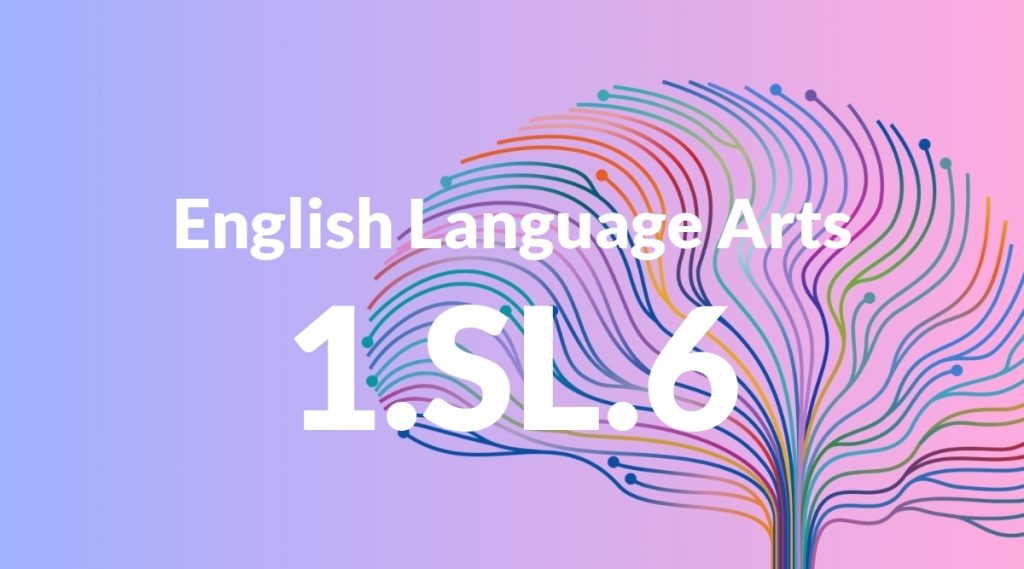Standard: 1.SL.6 – Produce complete sentences when appropriate to task and situation. (See grade 1 Language standards 1 and 3 here for specific expectations.)
Grade level: Grade 1
Subject: English Language Arts
Domain: Speaking & Listening
Teacher Overview
This standard emphasizes the importance of producing complete sentences in appropriate contexts, which is a foundational skill for effective communication. Mastery of this standard will help students express their thoughts clearly and participate more fully in classroom activities and discussions. Students should be familiar with basic sentence components, including subjects and predicates, and have practice forming simple sentences.
After mastering this standard, students will be better equipped to use descriptive language and present information clearly, laying the groundwork for more advanced speaking and listening skills.
Common Misconception 1
Some students may think that using fragments is acceptable in all speaking situations. This is incorrect because fragments do not convey complete thoughts and can lead to misunderstandings.
Intervention 1
Use sentence-building activities and provide clear examples of complete versus incomplete sentences. Encourage students to practice converting fragments into complete sentences.
Common Misconception 2
Another common misconception is that longer sentences are always better. This is not true because overly long sentences can become confusing and lose clarity.
Intervention 2
Focus on teaching the balance between clarity and detail. Use exercises that encourage students to create both concise and detailed sentences, emphasizing the importance of each in different contexts.
Prerequisite Knowledge
Students should have a basic understanding of sentence structure, including subject and predicate, and familiarity with common nouns and verbs.
Subsequent Knowledge
Students will develop more advanced speaking skills, including the use of descriptive language and the ability to present information clearly and coherently in front of an audience.
Instructional Activities
- Sentence-building games
- Interactive storytelling sessions
- Group discussions with sentence starters
- Role-playing scenarios
- Peer review of spoken sentences




